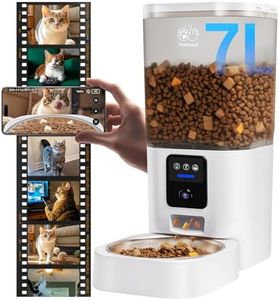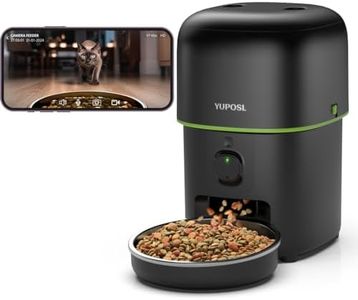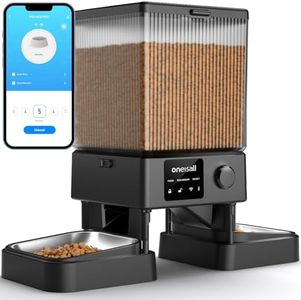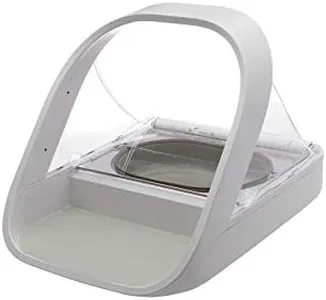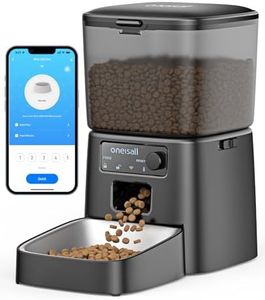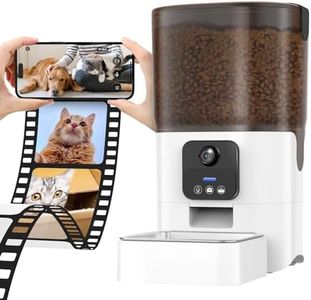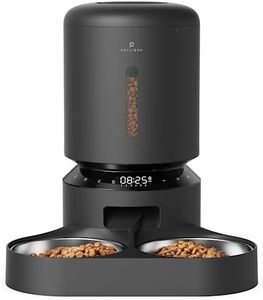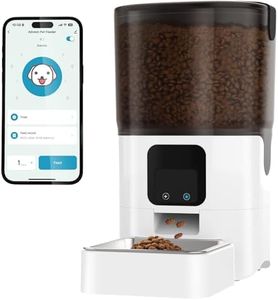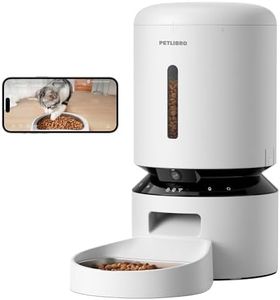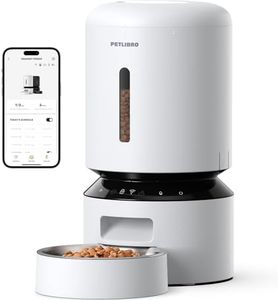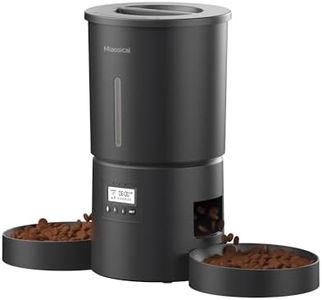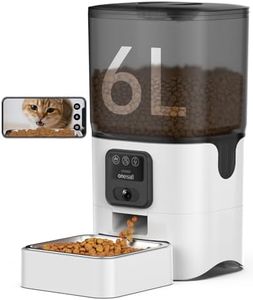We Use CookiesWe use cookies to enhance the security, performance,
functionality and for analytical and promotional activities. By continuing to browse this site you
are agreeing to our privacy policy
10 Best Smart Pet Feeders
From leading brands and best sellers available on the web.Buying Guide for the Best Smart Pet Feeders
Choosing the right smart pet feeder can make mealtimes easier and more consistent for your pets, and give you peace of mind when you're away from home. The best way to pick a feeder is to consider the size and eating habits of your pet, how often you’re away, and what level of tech convenience you want. By understanding the main features and specifications, you can find a feeder that matches your lifestyle and keeps your pet happy and healthy.Feeder CapacityFeeder capacity refers to how much food the smart pet feeder can hold at once, which is important for determining how often you need to refill it. Values range from small capacities (enough for a day's worth of meals, typically under 2 liters) for smaller pets or single daily feedings, to larger ones (over 4 liters) for bigger pets or longer unattended periods. If you have small pets or are home often, a small to medium capacity may be enough; for larger pets, multiple pets, or if you travel frequently, a larger feeder will reduce the need for frequent refills.
Portion ControlPortion control is the feeder’s ability to dispense specific amounts of food at each mealtime. This is vital for managing your pet's weight and health. Some feeders dispense fixed amounts, while others let you set the portion size for each meal. If your pet tends to overeat or needs a controlled diet, look for a feeder with fine-tuned portion settings. For pets with stable eating habits, simpler models with fewer portion choices might be suitable.
Meal SchedulingMeal scheduling allows you to program the feeder to serve meals at certain times of the day. Some devices have a few preset times, while advanced ones offer flexible, precise scheduling for multiple meals a day. If your routine or your pet’s feeding needs are predictable, basic scheduling is adequate. For pets that require strict or irregular feeding times, opt for models that offer customizable meal plans.
Connectivity and App FeaturesMany smart feeders connect to your smartphone via Wi-Fi or Bluetooth, letting you monitor and control feeding remotely through an app. Basic feeders might only offer manual controls, while others let you get notifications, set schedules, or even see feeding history. If you want maximum control or travel often, strong app features and connectivity are beneficial. If tech isn’t a priority, a simple programmable feeder may be enough.
Backup Power OptionsBackup power options ensure your feeder works during a power outage, usually through batteries or a built-in rechargeable battery. This is important for the safety and routine of your pet, especially if you’re not home regularly. If your area is prone to outages or if you’re frequently away, choose a feeder with reliable backup power. If you’re usually at home, this feature may be less critical.
Food CompatibilityFood compatibility indicates what types of pet food can be used—most feeders work best with dry kibble, but some also handle semi-moist or wet foods. The shape and size of the kibble can affect how well the food dispenses. Before choosing, check your pet’s dietary needs and the feeder’s food requirements. If your pet eats specialized or wet foods, ensure the device is designed for that type.
Ease of CleaningSince pet feeders need regular cleaning to stay hygienic, look at whether parts are dishwasher-safe or easy to disassemble. Feeder bowls and food containers that can be quickly removed and cleaned are the most convenient. If you want to save time on upkeep, prioritize feeders with simple, washable components.
